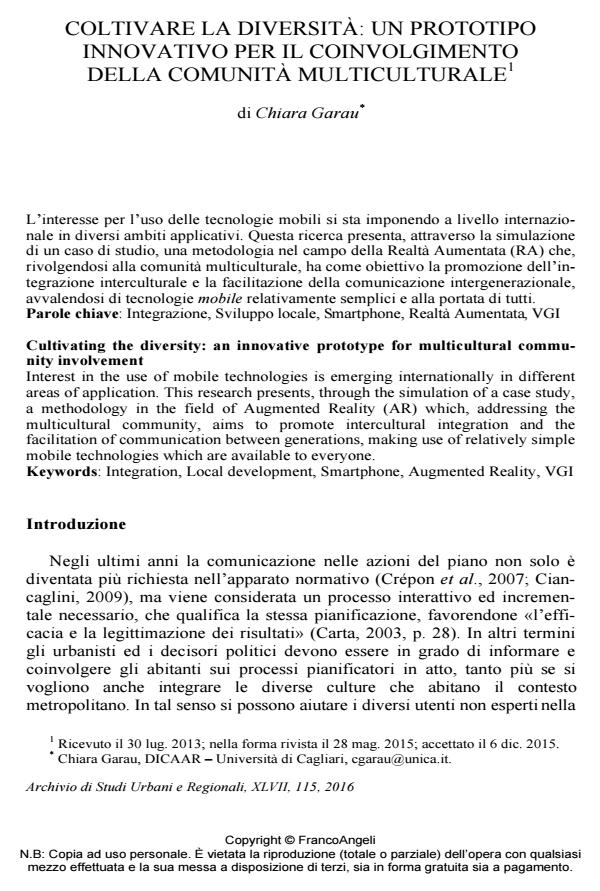Coltivare la diversità: un prototipo innovativo per il coinvolgimento della comunità multiculturale
Titolo Rivista ARCHIVIO DI STUDI URBANI E REGIONALI
Autori/Curatori Chiara Garau
Anno di pubblicazione 2016 Fascicolo 2016/115
Lingua Italiano Numero pagine 19 P. 75-93 Dimensione file 98 KB
DOI 10.3280/ASUR2016-115004
Il DOI è il codice a barre della proprietà intellettuale: per saperne di più
clicca qui
Qui sotto puoi vedere in anteprima la prima pagina di questo articolo.
Se questo articolo ti interessa, lo puoi acquistare (e scaricare in formato pdf) seguendo le facili indicazioni per acquistare il download credit. Acquista Download Credits per scaricare questo Articolo in formato PDF

FrancoAngeli è membro della Publishers International Linking Association, Inc (PILA)associazione indipendente e non profit per facilitare (attraverso i servizi tecnologici implementati da CrossRef.org) l’accesso degli studiosi ai contenuti digitali nelle pubblicazioni professionali e scientifiche
L’interesse per l’uso delle tecnologie mobili si sta imponendo a livello internazionale in diversi ambiti applicativi. Questa ricerca presenta, attraverso la simulazione di un caso di studio, una metodologia nel campo della Realtà Aumentata (RA) che, rivolgendosi alla comunità multiculturale, ha come obiettivo la promozione dell’integrazione interculturale e la facilitazione della comunicazione intergenerazionale, avvalendosi di tecnologie mobile relativamente semplici e alla portata di tutti.
Parole chiave:Integrazione, Sviluppo locale, Smartphone, Realtà Aumentata, VGI
Chiara Garau, Coltivare la diversità: un prototipo innovativo per il coinvolgimento della comunità multiculturale in "ARCHIVIO DI STUDI URBANI E REGIONALI" 115/2016, pp 75-93, DOI: 10.3280/ASUR2016-115004